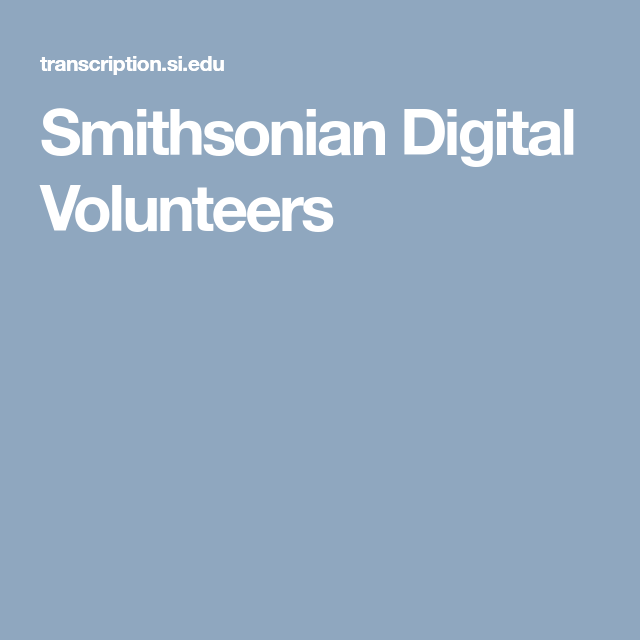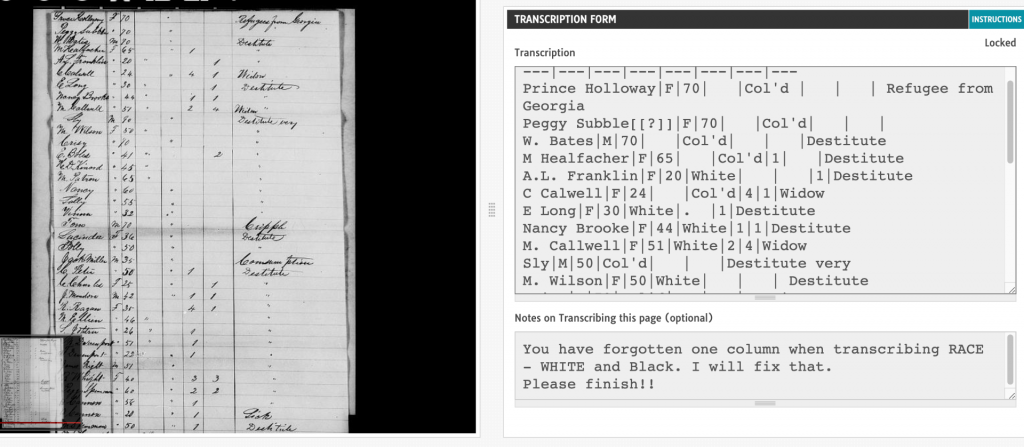Starting in February, I began to volunteer for the Smithsonian, the biggest museum complex in the entire world. They offer a program for digital volunteering, which allows for me to help contribute to the cause from home. The volunteer work primarily focuses on transcribing historical records and artefacts that originate from all over the world. Being a History student, I believed that participating in this program would be something that I would be very interested and engaged in.
One of the most difficult challenges when I first began this program was having to read antique handwriting. It was especially difficult because it was in cursive. However, I was able to find a solution to this by finding a reference sheet for myself to help me compare the text I’m transcribing with the cursive of the 1800s. As I kept doing this, I began to become much more familiar with reading and remembering each letter, which led to me being able to read the text independently. This demonstrates LO2, because I recognised that I was facing a challenge in being able to read historical texts and was able to find a solution and develop a new skill for myself in the process.
As of now, my main area of focus is in the History of Southern U.S. in the 1800s, specifically in the form of government records and journal entries. I found that these would be best for me to begin with, as I felt that I still needed to practice transcribing more if I wanted to have a go at the more complex artifacts.
This was my very first project as a digital volunteer. The document originated from a records bureau in North Carolina in the 1800s. Since it was my first time as a volunteer, I had made some mistakes in my initial transcription. However, as seen in the image, another volunteer had given me a word of advice and cleaned up after my mistake for me, which was very generous of them. I initially struggled at first, especially because I was very surprised by how difficult a lot of the handwriting was to read. When I had first signed up for the program, I hadn’t expected for the records to be of such difficulty to transcribe. However, with my reference sheet I slowly began to become more proficient as I went on.
This was my attempt at one of the science-based records that were needed to be transcribed. At first, it was quite difficult because it was very unlike the format of the government records I had done previously. However, as I continued to do it I became much more comfortable with this format and began to do it at a much faster pace.
This was one of the more recent transcriptions I had contributed in. I was able to complete around half of this transcription while a fellow volunteer was assisted me and completed the other half and submitted it to the head transcribers, who need to approve it before submitting it to the Smithsonian.
Another aspect of the program is the collaborative work that must be done in order to complete the projects. Every project has at least 2-3 collaborators working on it together, with each individual working on it at a time and passing whatever they haven’t completed to the next person. This has been very helpful because there were times where I struggled with transcribing. However, I would often leave messages for my fellow collaborators, who often help in correcting my mistakes and finishing parts that I couldn’t do myself. This is a demonstration of LO5, as it would be almost impossible to try and transcribe everything on my own. I’ve been able to become much more collaborative because of this experience and have become a lot less reluctant towards assistance and advice.
My work with the Smithsonian has allowed for me to tackle a very important global issue, which is the accessibility of information. Being able to have equal access to knowledge is extremely important, especially in academic settings. By volunteering to transcribe these works, I am helping people such as researchers skip the initial step of having to transcribe it themselves. By becoming a volunteer for this cause, I am demonstrating LO6. Whether it’s working with refugee and immigration documents to biodiversity data, every project that I take on is a historical record of events and issues of historical significance. By giving the general public the opportunity to read and understand these records, I am able to engage in and assist with a matter of global significance.



